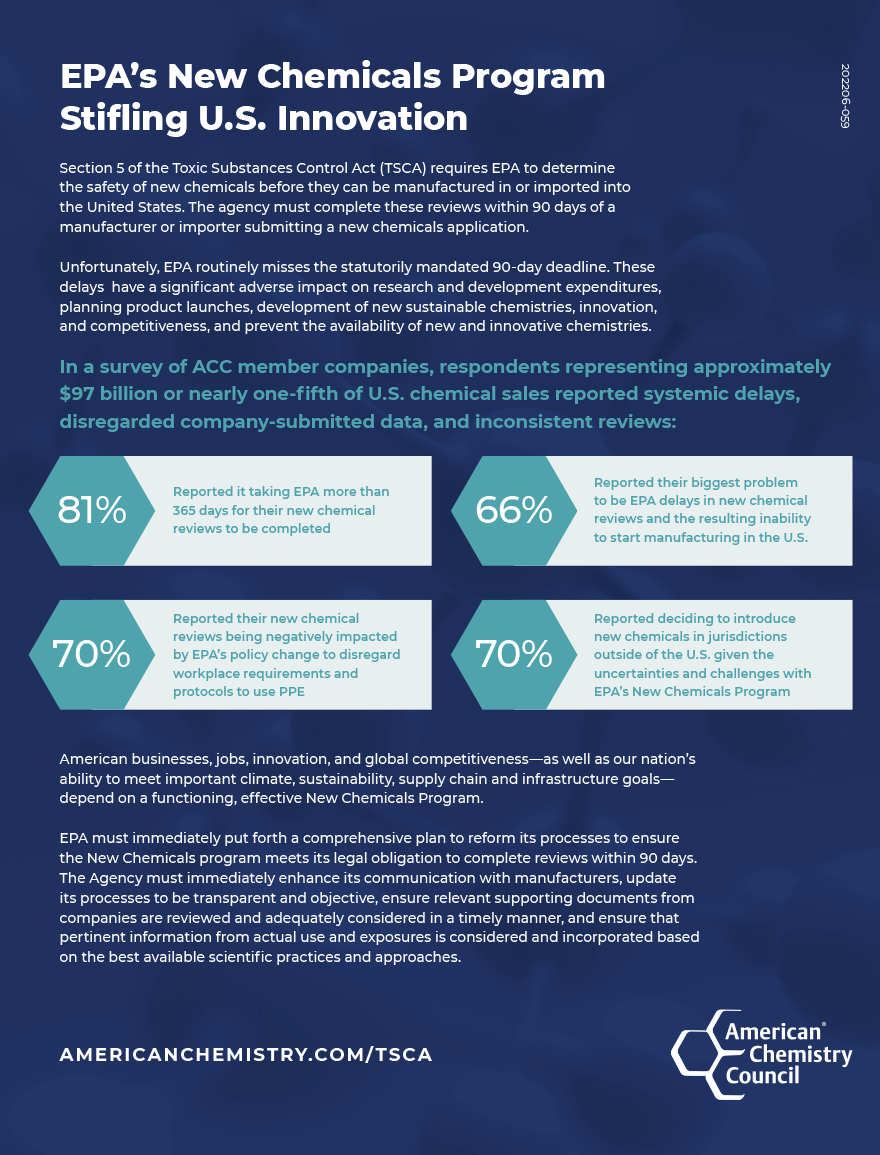Chemistry is inextricably linked to innovation and scientific advancements needed to accomplish a wide range of our nation’s and the world’s goals. And Americans agree. According to a recent Morning Consult poll conducted on behalf of ACC, seven in ten adults agreed that chemistry is essential to our economy and plays a vital role in innovation and the creation of products and technologies needed to accomplish a wide range of supply chain, climate, sustainability, energy efficiency, and infrastructure goals.1
Unfortunately, EPA has been implementing policy changes that run counter to congressional intent, counter to the bipartisan compromise that made TSCA modernization possible, and that inhibit American innovation and the ability to compete in the global market.
If the U.S. is to remain a global leader in innovation, TSCA must be a reliable and fully functioning program. Promoting the safe use of the essential products of chemistry is a shared responsibility of manufacturers, the government, and those who use or sell chemical products.
